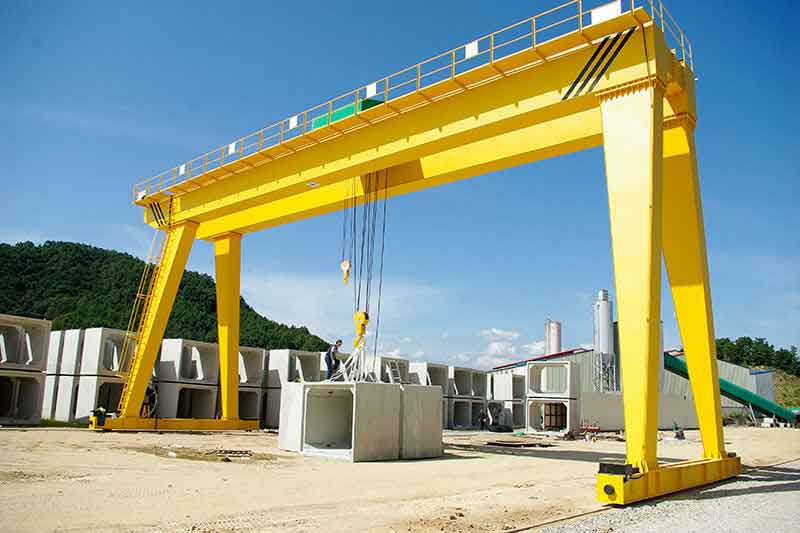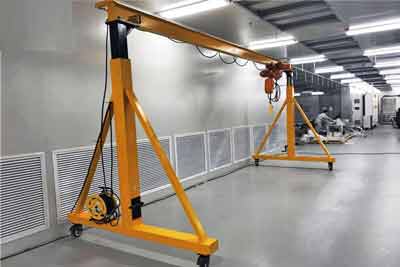Steel Gantry Crane Welding & Repair Welding Methods & Process
Introduction to the welding of steel gantry crane
Gantry cranes are widely used for heavy material handling in various industrial sectors and applicaitons. The steel gantry cranes are widely used due to its wide supply range from 500kg to 320 ton compared with light weight aluminum gantry crane.
For large lifting equipment, such as steel gantry crane, the success of the welding depends mainly on the correct guidance. Let us judge how the steel gantry crane is welded. There are many aspects to be seen.
The welding technique, type of base metal, number of welding electrodes, type of shielding gas, and other welding process factors all affect the tensile strength and bending properties of the welded joint. If any of these factors change, the complete portal crane's welding process will have to be re-evaluated.
Don't dismiss some secondary factors, don't alter some secondary factors to re-evaluate, and don't claim that secondary factors are unimportant. If you come across a weld on a crane that is run by two or more welding methods, you should evaluate each welding process. Of course, a combined assessment is also an option.
As a result, correct specification advice is required for the welding standard of steel gantry crane to avoid detours, so that the function of the steel gantry crane can play the maximum and maximum impact without affecting the use of the equipment.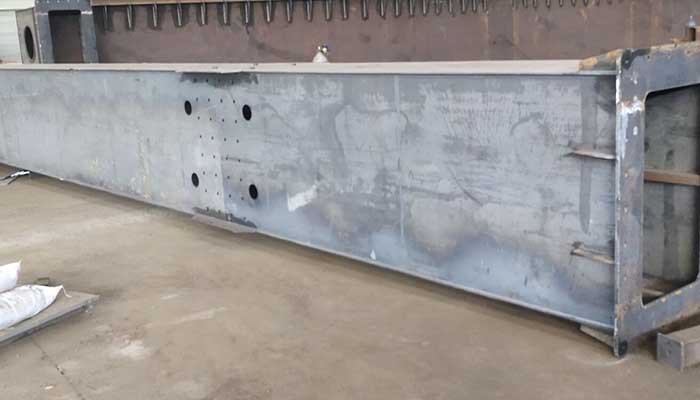 Supporting leg of large capacity steel gantry crane
Supporting leg of large capacity steel gantry crane
Steel Welding methods of steel gantry crane
Steel is the raw materials of the steel gantry cranes, which is constructed with steel plates, steel, and other combinations of connections, which are then transported to the construction site and connected after the formation of the overall structure, such as, bridges, end carriages, supporting legs, and other structures.
Connection plays a significant role in the steel gantry crane construction. Its manufacturing and installation will have an immediate impact on the performance and fiscal indicators of gantry cranes.
Common welded steel connections, bolted or riveted pin connection. Divided into ordinary bolt bolted connections and high strength bolts. The earliest use of ordinary bolt connection, approximately from the 18th century began, it is still an important way to install the connection. 1820s began to use a rivet connection. 19 th century and the emergence of welds. Since the middle of this century has been the development of high strength bolts.
After years of experiments and research, we summarize the various steel connection method, designed to meet the safety and reliability, to save steel, simple structure, manufacture and installation easy installation principles.
Connection of Steel Gantry Cranes
Bolted or riveted pin connectors, as well as common welded steel connections.
- Bolt connection - both standard bolted connectors and high strength bolts are categories. It is still crucial to make the connection using the standard bolt connection, which dates back to the early 18th century. A rivet attachment was first used in the 1820s.
- Welding connection - Welds first appeared in the nineteenth century. High strength fasteners have been developed since the middle of this century.
After years of study and experimentation, we have compiled the various steel connection techniques that adhere to the principles of safety, dependability, steel conservation, straightforward construction, easy manufacture, and installation.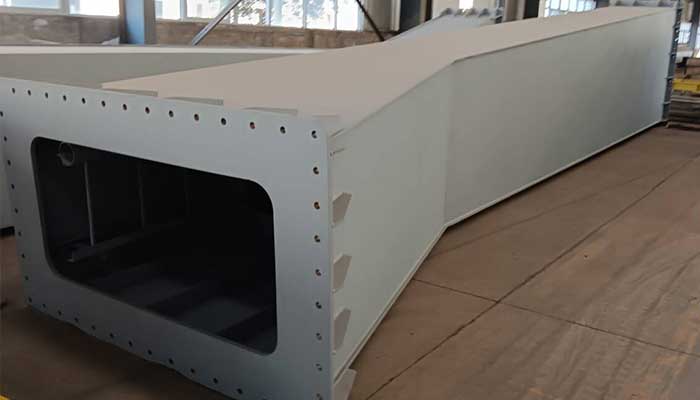 Main steel structrue of large capacity gantry cranes
Main steel structrue of large capacity gantry cranes
1.welding
Welding is a connection method now widely used.
Advantages: The geometry adaptable, economical use of materials, not weakened cross section; facilitate the production process can be automated; airtight connection is good, structural rigidity.
Disadvantages: connection stiffness, easy to cause residual stress and deformation structure, low temperature sensitivity of weld large.
2.rivet
Advantages: dependable power transmission, toughness and excellent plasticity, ease of quality inspection, and improved resistance to dynamic loads. specially designed to support large weights under direct structure and dynamic loads.
Cons: Complicated structure, significant steel building issues, and excessive noise.
3.Standard bolting
Simple gadgets and easy handling are advantages.
Cons: Installation is challenging and requires precise bolt machining. Low bolt accuracy should not be subjected to heavy shear.
4. high-strength bolting
The structure of the work under the structure and low power loads, connection reliability, detachable, and fatigue resistance are pros. Other advantages include quality inspection ease, uniform mass force, and excellent connections' toughness and ductility.
Cons: The installation procedure for friction surface treatments is a little complicated, the cost is a little higher, and it's simple to lose things when things are moving quickly.
5.pin connection
Benefits include reliable power transmission, durability and excellent plasticity, ease of quality inspection, anti-power load numbers, and tightness.
High manufacturing machining demands are a drawback.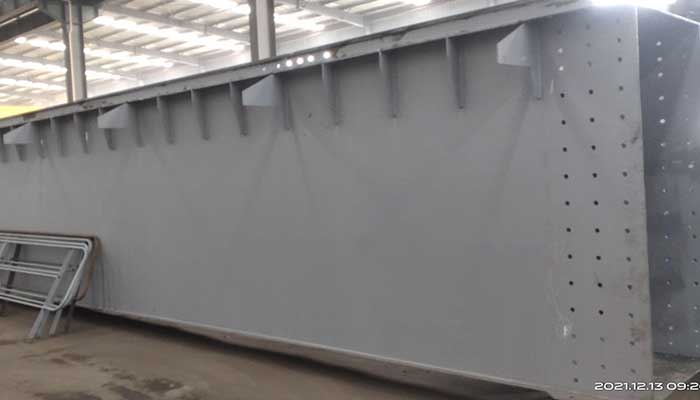 Steel gantry crane main steel structure
Steel gantry crane main steel structure
Welding and repairing technical process of steel gantry crane.
Avoiding hot crack and cold crack is the key method in the welding repair of steel gantry cranes.
Reducing the hydrogen diffusion content, the propensity for the weld to harden, the heat input, and the binding stress all help to prevent welding cracks.
1. Open groove.
After the door type crane was replaced, a v-shaped groove with a depth of about 12mm was made on both sides of the joint between the root and cast steel substrate.
2. Material selection for the welding procedure.
The welding material was chosen to have a low hydrogen type and a high crack resistance of J557 electrode in order to lower the content of diffusible hydrogen in the welded seam.
3. Steel gantry crane welding specifications.
The following layers switch to a 4mm J557 electrode with a welding current of 130–160A and dc reversed power polarity. 2mm J557 welding rod, welding current 110A.
4. Welding.
The J557 electrode was heated to 350 °C for one hour prior to soldering;
Use a fire that has been preheated to around 300 °C for soldering;
The other non-welding tooth surfaces are coated with yellow mud before welding, and it is used for multi-layer and multi-pass welding.
After welding, quickly remove any stress by hammering the welding bead; each bead should clean the hammer blow;
until the height of welding reaches the front of the wide groove substrate and the welding interlayer temperature is not lower than 300 °C;
After welding, cover with asbestos fabric to cool for 8 hours, and then fix the welding joints with an angle grinder.


